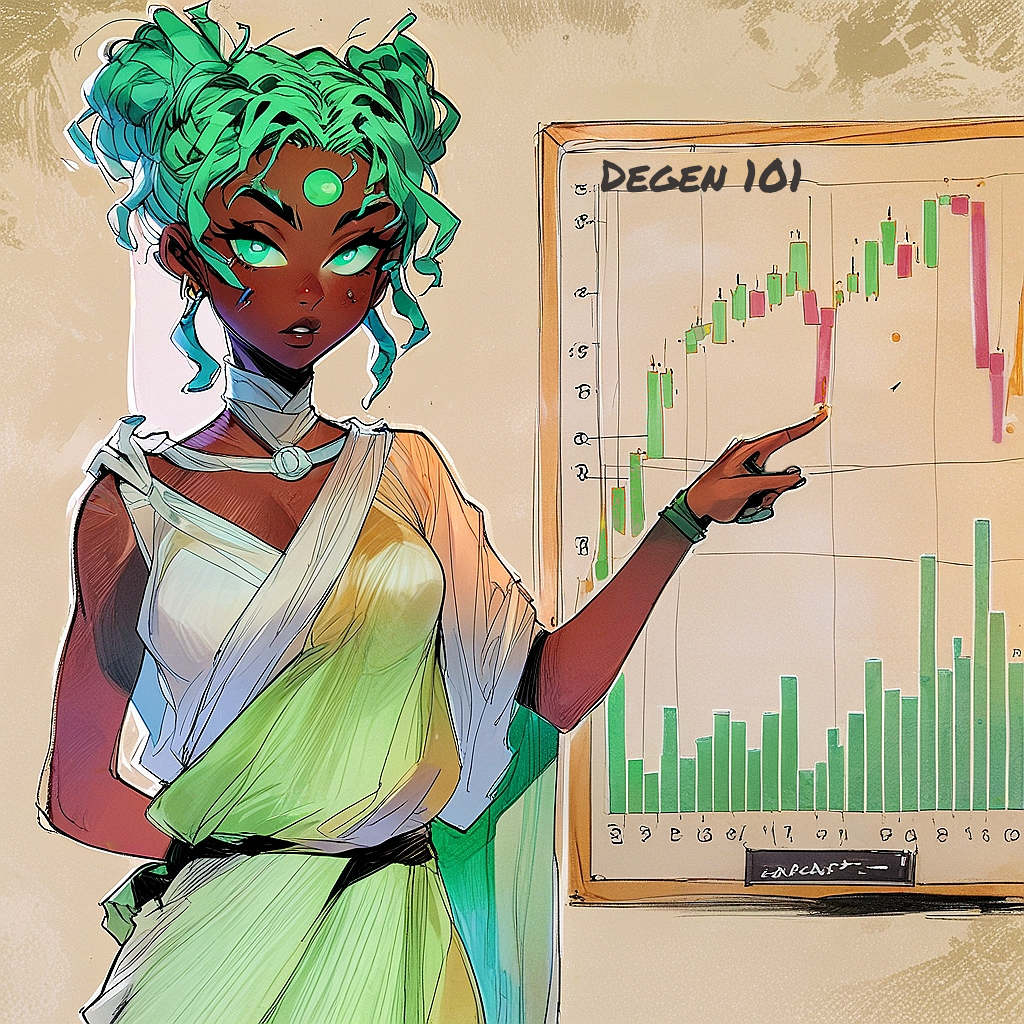So you want to invest in cryptocurrency huh? You read about some dude investing $6 and becoming a billionaire two weeks later and thought “How hard can it be?”.
Well you’re in the right place! For the investing part. You’re probably not going to become a billionaire. Statistically you’ll actually probably lose money.
Now that we’ve sold you on investing in crypto, let’s talk about one of the most neglected parts of responsible investment; having a plan.
What is a crypto investment plan?
We assume you know what the word is. So what is a plan in terms of investing in crypto?
Well it can be quite simple, or it can be incredibly complicated. Which it is will depend on your experience, the time you want to commit to crypto, and your objectives.
One quality it should definitely have though is existing.
Some simple questions to ask yourself:
-
- How much am I investing?
-
- What do I hope to achieve from my investing?
-
- What is my risk appetite?
-
- How long do I plan to invest for?
-
- Under what circumstances will I sell early?
-
- Are there any circumstances under which I will hold for longer?
Having answers to these questions (we suggest writing them down) will mean you feel better equipped to handle whatever crypto throws at you.
1. How much am I investing?
This might seem like a simple question that you can dismiss, but it’s actually a really great idea to decide this and to write it down – especially if you’re new to crypto.
The reason for this? Well; crypto can be very addictive – it is, afterall, not too dissimilar from gambling (by having a plan you make it more dissimilar).
Many (almost all) new investors experience one of two things when they invest in crypto; either they quickly make some money, or they quickly lose some money.
With either of these outcomes it can be really easy to fall into the trap of wanting to add more money to the equation; more than you intended to spend to begin with.
You have either decided that you are the best trader in the world and need to capitalise on it, or you just made “one mistake”, and that other token you were thinking of buying actually did really well, and you just need one more shot.
By deciding on, and more importantly sticking to, a budget, you’ll not only stop yourself losing more than you can afford; you’ll likely also be more prudent in picking your positions.
There is a temptation to start thinking of cryptocurrency as “play” money – having no option of reloading your funds will help shatter this illusion.
What form your budget takes will depend on how you wish to invest. For an idea of different strategies (with zero advise on whether you should use any of them) you can check out Crypto as an Investment: Investment Styles
For instance;
-
- “I am going to invest $1,000, and if I lose it then I am leaving crypto for good.”
-
- “I am going to invest $100 every month on the 5th for the next two years.
-
- “I am going to invest $50 now and if X or Y happens, another 50 dollars down the road”.
Any of these are fine; so long as you decide it, without the emotion of a trade gone wrong (or right).
2/3/4 Aim, risk appetite, and time frame.
We bundled these three together because they are very interlinked. They are all tied to the idea of “what is my aim?”
This is also incredibly important to have in mind; and it can’t just be “to get rich”. You’ll need to be more specific.
How rich do you want to get? Over what timeline? What is your risk tolerance like?
There could be any number of answers to these questions, and all of them could be valid, but it is important to know what your aim is. You should be able to say that aim in a sentence.
For instance;
-
- Example A: “I’m looking to invest in something over the next five years and increase the value of that investment by 30% in that time, with minimal risk* to my assets.”
-
- Example B: “I want to make a 10,000% return in the next week and I’m willing to risk it all to do so.”
Neither of these is necessarily “wrong” (though one is probably more attainable); but they are very different. Having this kind of aim in place means that you can begin evaluating assets based on how other similar assets have performed in the past – for more on evaluating assets check out Crypto as an Investment: Evaluating Tokens
In the examples above you would likely want something quite stable for Example A, a token you knew wasn’t going to #rug# and that had a clear value proposition.
For Example B you would likely be looking to put your money into something very new, hoping to catch a gem before the public found out about it; you may need to overlook some risk factors that would make you run a mile in Example A.
You’ll have a much better idea of what kind of project might give you the best shot of achieving your goal. You will also get a better picture of whether your goal is achievable at all.
Let’s take a look at an example that is “wrong”;
-
- Example C: “I want to make a 10,000% return in the next week and I’m not willing to take any risk.”
Now obviously, this would be a fantastic goal, if it were plausible. However after examining assets that have achieved these kinds of gains, you would likely discover how many similar projects failed, or disappeared.
*There is no such thing as zero-risk in cryptocurrency
5) Under what circumstances will I sell early
So you have decided on an amount of time you wish to invest for, and an aim you want to achieve. Now you need to decide under what circumstances you will deviate from this.
But wait, isn’t the point of a plan to stick to it?
Yes, but this is also part of a plan; contingencies.
Every single experienced successful trader will implement these in some form or another. As we mentioned above, crypto is an incredibly risky investment compared to more traditional investments – the tradeoff being the potential for gain is also much higher.
One of the results of this is “volatility” – crypto changes price suddenly and quickly; bad news about a project can see jaw dropping fall offs in price. Elon Musk tweeting about dogs can send Dogecoin 20% higher in an hour.
The point is; not even the best traders can predict everything.
You need to decide (and stick to) what will cause you to sell early, what will cause you to hold longer.
One of the times new traders are actually worst at selling is when they have made a big profit; their subconscious is telling them “if it can go this high imagine how much higher it could go”.
Often the fear of feeling you “missed out” on even more profit, is worse than the fear of losing the profits you’ve already made.
You need to actively fight this; and the best way is to have a firm plan in place to take profits.
We have no interest in telling you what this plan should be, however is an example of what a plan (we’re not saying it is a good or bad one) might look like:
-
- “I am going to invest $100 into this token. I plan to sell it in one year. My aim is to make a 50% profit. If the token doubles in price before then, I will sell half of my supply, and leave the rest until the end of the year”.
Having this plan, and sticking to it, will significantly reduce the emotion around the idea of selling; in general – emotion and trading don’t go well together.
6) Under what circumstances will I hold longer?
On the flip side; it is also worth having a plan in place to leave an asset if it drops too low, or because of other factors. This is slightly more nuanced as, in the case of the price dropping, one’s emotion is generally reversed; their body is telling them to sell.
For new traders, with little experience around what price action means or #charting# (if you had to read the tooltip for charting, this means you); you can also tie your sell signals to more #macro# signals. For example:
-
- “I am going to invest $100 into this token. I plan to sell it in one year. My aim is to make a 50% profit. If the token doubles in price before then, I will sell half of my supply, and leave the rest until the end of the year. If the price has dropped by 30% and the project has missed more than one roadmap deadline I will exit completely”.
Again, this “plan” is merely an example; we made it up just for this. Make your own plan, compile advice from lots of different people.
Conclusion
Crypto can be incredibly unpredictable; tokens that nobody expected to do much, will run to crazy heights. Pictures of monkeys suddenly become worth millions. All of this can give you a feeling like you’re constantly missing out, even if you’re actually making decent profit.
Having a plan helps to cancel out that noise and to make decisions that aren’t based on impulse emotion.
They also help, even when they don’t work out.
Losing money because your plan went wrong means you can make corrections to your plan. Losing money because you let emotions guide you is much harder to correct.




